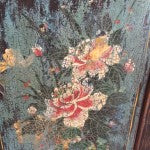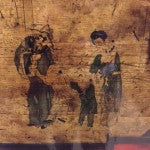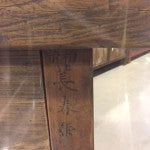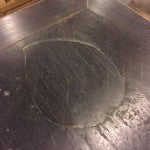
Details tell a story in Beijing
I’m heading home from Beijing now so it’s a good time to reflect on another very useful few days. I’ve caught up with the main suppliers that we buy our Chinese antiques from and lined up more gorgeous pieces to ship in the new year. We already have one container due to leave Beijing at the end of the month so we are getting ahead of ourselves and making sure we have a nice selection of antiques for the spring. Whilst we are in a position where we can, and often do, select antiques from a couple of restorers from photos alone, I always prefer to choose them in person if I can. It is the only way to really appreciate the finish and beauty of the furniture even if, having worked with these workshops for several years, I know that the quality will be second to none.
It also means that I often get to learn more about the history of a particular item of furniture and any interesting quirks or features that it displays. I’ve been dealing with Chinese antiques now for about 12 years but every time I come out here there is always something new to learn.
I wrote in a recent post about some of the lovely detail that is often seen in the antiques that we have available, perhaps in the paintings that decorate the front of a cabinet or in the joinery that can indicate when a piece was produced. There is plenty more of this interesting detail in many of the furniture I selected on this visit. For example, the beautiful paintings of peony flowers on an old grain cabinet from Gansu province that would have symbolised the owner’s important status. Unusually these are sent against a pale blue lacquered background, now aged and crackled to give a wonderful soft, pastel finish.
Another cabinet from Gansu is decorated with scenes of figures that include two children and their parents, one child embracing his father. The paintings are worn but still clear against a pale background and it is fascinating to study the characters’ dress and facial expressions and to wonder what story is being played out.
| Peony flowers | Chinese figures | Inscription of carpenter’s name | Old repair in peach shape |
Other features are more practical. For example, a simple elm table I chose from Henan province is in a plain finish but the upper part of each leg shows a short inscription in old Chinese characters. Unusually for Chinese antique furniture, which can be difficult to date accurately, these give the date of when the table was made on one leg, whilst on the other is shown the name of the shop or carpenter who produced it.
Lastly, even a modification or repair can tell a story. A little kang opium table shows signs of repaired scorch marks, perhaps caused by a lack of attention by the user when under the influence of the drug. Another table has a filled in section that is an old repair. This is not particularly unusual or well carried out but on closer inspection you can see that it is in the shape of a peach– a sign for longevity. Typical of Chinese carpenters, it seems who ever carried out the work took the opportunity to include an auspicious symbol even in a basic repair to the table top.
All of these little quirks and details in my view only add to the character of each piece of furniture. It makes you realise that each item really does have its own history and backstory and I can’t help wonder about what sort of events and turbulent times some of these beautiful cabinets, tables and trunks must have ‘lived’ through.
We’ll be working on adding my selection onto the website over the coming weeks, so look out for more details of these soon, along with some other projects that we are working on – more to follow in the New Year.









Leave a comment